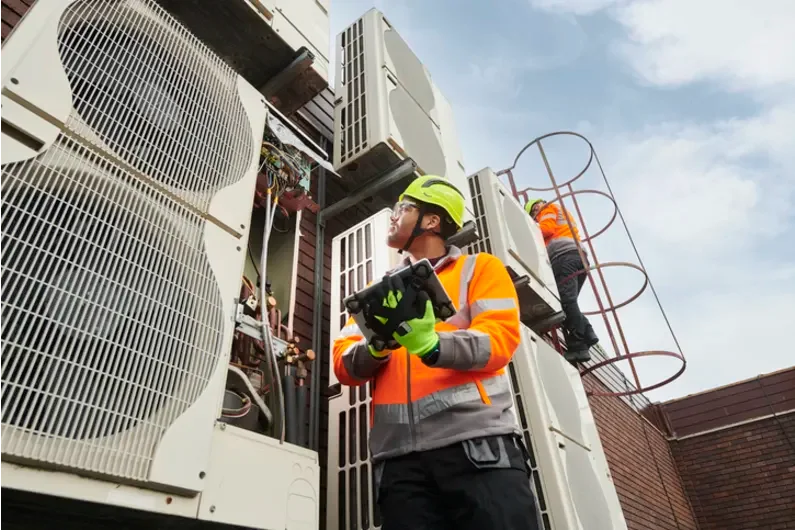A dispatcher system centrally manages task allocation. It serves as a link between clients and the workforce. Its role is to ensure tasks are efficiently assigned to available personnel. Additionally, it tracks progress.
In essence, a dispatcher system routes client requests to the right operatives. This streamlining maximizes resource usage and improves task handling. Its goal is to boost organizational efficiency and productivity. Automating task distribution lightens the workers’ load. Consequently, workers can concentrate on their specific duties better. This enhancement not only fosters proficiency but also averts holdups.
Dispatcher systems play a pivotal role across various sectors. Transportation, logistics, and emergency services are prime examples. These industries require swift and competent task assignment. Moreover, in IT, these systems manage load distribution and task timing.
Content:
- Delving into the Crucial Role of Dispatch Systems in Public Safety
- A Deeper Understanding: How Dispatcher Systems Heighten Public Safety
- Reviving Old Paradigms: Unveiling the Opportunities of Dispatcher Systems for Keeping Safety
- Breakthrough Innovations: Examining the Multifaceted Fruits of Dispatcher Systems in Public Safety
- Ensuring Seamless Public Safety with Reinforced Dispatcher Systems
Advancements in technology have made workflow optimization crucial. Dispatcher systems exemplify such advancements in task management. The following sections will discuss the system’s significance and utility across industries. We’ll examine how it aids companies in bolstering productivity and ensuring seamless distribution of assignments. Thus, we discover the indispensability of this tool for business workflow enhancement. Let’s delve further into its attributes and advantages.
Delving into the Crucial Role of Dispatch Systems in Public Safety
Dispatch systems are indispensable in public safety, forming the critical link between distress calls and emergency responders. They are technologically advanced networks that prioritize and assign emergency situations with swiftness and precision. These systems constitute the unseen backbone of emergency management, seamlessly connecting those in need with life-saving services. By handling vast amounts of data, dispatch systems ensure that the right information reaches the right hands at the right moment.
Dispatchers, the human element within these systems, play a pivotal role. Highly trained, they interpret, manage and relay information with composure under pressure. This human intervention is vital, converting systematic alerts into actionable instructions. They assess situations rapidly, making split-second decisions that could mean the difference between life and death. Their role speaks to the balance of technology and human touch in enhancing public safety.
Technological evolution has brought about sophisticated dispatch systems. The latest iterations are equipped with GPS tracking, predictive analytics, and automated alerts. These features enable precision in deployment, optimizing response times. Enhanced communication tools and mobile data terminals provide responders with real-time information, upgrading the entire emergency response process.
Yet, with such systems come challenges in adoption and training. Systems must be user-friendly to facilitate quick learning and intuitive use under stress. Regular drills and updates are critical to ensure dispatchers and responders are adept at harnessing the full potential of these life-saving tools. Fostering a culture of continued education and system familiarization is part of keeping our communities safe.
Finally, it’s paramount to recognize the critical role dispatch systems play in disaster resilience. Their efficiency can determine the extent of harm a community faces. By investing in robust systems and training, municipalities enhance their ability to mitigate the impacts of emergencies. Strong dispatch systems not only save lives but also exemplify our commitment to public safety.
A Deeper Understanding: How Dispatcher Systems Heighten Public Safety.
Dispatcher systems serve as a lifeline for those facing emergencies, providing an organized response structure. These systems harness the latest technologies to coordinate diverse emergencies, ensuring the proper deployment of resources. They maintain a state of readiness, 24/7, to handle any crisis. Their structured operations enable swift allocation of emergency units, minimizing response time and potentially saving more lives.
Each call handled by a dispatcher system undergoes a meticulous triage process. The advanced software categorizes calls based on severity and location, prioritizing them accordingly. Dispatchers are then able to send the appropriate responders to the scene, equipped with the necessary information and equipment. This systematic triage ensures that high-priority emergencies receive immediate attention.
Dispatch systems are not limited to immediate response; they also play a crucial role in preparedness. Through extensive data collection and analysis, they can predict and prepare for high-risk periods. This proactive approach is integral in disaster-prone regions where preparedness can substantially reduce impact. Furthermore, regular system audits and simulations ensure that the systems remain reliable and effective.
The integration of dispatch systems with other public safety facets cannot be overstated. They communicate critical information to hospitals, law enforcement agencies, and even utility companies. This interconnectivity forms a comprehensive safety network, fortified against a range of emergencies. Such integration fosters an environment of cooperative resilience and resource-sharing during critical times.
In conclusion, dispatcher systems are a mainstay in heightening public safety. They are intricate mechanisms that, while behind the scenes, ensure a prompt and well-organized response to emergencies. Continuous improvement and investment in these systems will only further enhance their reliability and efficacy in the pursuit of saving lives and safeguarding communities.
Reviving Old Paradigms: Unveiling the Opportunities of Dispatcher Systems for Keeping Safety
Dispatcher systems often revive age-old principles of communication and coordination, albeit with advanced technological support. Rooted in the concept of a centralized command, these systems provide a coordinated approach to emergencies, reminiscent of historical emergency responses. Yet, the integration of modern technology transforms them into dynamic tools for public safety, ready to meet contemporary challenges.
Dispatcher systems retool these paradigms to suit urban complexities and the scale of modern populations. They provide a fusion of rapid communication methods and data management to manage emergencies effectively in large-scale environments. As cities grow, so does the density of crises, elevating the relevance and necessity of such advanced systems. These platforms become indispensable in efficiently safeguarding populous landscapes.
Through continuous innovation, dispatcher systems offer robust opportunities to reshape public safety. With the advent of smart cities, these systems can integrate with Internet of Things (IoT) devices to further enhance situational awareness. Incorporating such technologies allows for even faster reaction times and more precise location tracking, tailoring response efforts more effectively.
Dispatcher systems also bridge the gap between historical practices and future emergencies. As the climate crisis escalates, weather-related disasters are becoming more frequent, and these systems enable swift evacuations and emergency responses. The symbiosis between historic paradigms and cutting-edge technology is instrumental in developing resilience against an unpredictable future.
In essence, dispatcher systems signify a renaissance of time-tested emergency response practices, revitalized by digital innovation. They not only offer improved efficacy in crisis management but they also represent a beacon of continuity and adaptability. By fostering these advanced systems, society honors its past while innovating for future safety and well-being.
Breakthrough Innovations: Examining the Multifaceted Fruits of Dispatcher Systems in Public Safety
Dispatcher systems represent a quantum leap in public safety, with innovations that span a diverse array of applications. These systems are more than just communication tools; they are multifaceted platforms that integrate a variety of cutting-edge technologies. From predictive analytics to advanced mapping tools, they revolutionize the way emergencies are managed, reducing the potential for human error and ensuring more lives are saved.
One of the crowning achievements of modern dispatch systems is the degree of automation they introduce into the emergency response process. By automating routine tasks and responses, dispatchers can focus on more critical aspects of the crisis, such as providing emotional support to those distressed. Automation also underpins improved resource allocation, allowing for a more seamless public safety infrastructure.
Dispatcher systems blur the lines between the physical world and digital data. They amalgamate real-time information from multiple sources, painting a comprehensive picture of unfolding events. This integration allows for immediate strategic decisions and deploys resources with unparalleled precision, helping responders navigate complex scenarios effectively.
The human factor, an often overlooked aspect, gains from the advancements in dispatcher systems as well. Enhanced training simulators and decision-support tools offer dispatchers the chance to refine their skills in a controlled environment, preparing them for the unpredictable nature of emergencies. This symbiotic relationship between human and technological resources elevates the dispatcher’s role from operator to strategist.
In closing, examining the multifaceted innovations of dispatcher systems sheds light on their transformative impact on public safety. As these systems continue to evolve and integrate further into our safety networks, they promise a future of heightened readiness and more resilient communities. They are a testament to the power of innovation in fostering a safer world for all.
Ensuring Seamless Public Safety with Reinforced Dispatcher Systems
Dispatcher systems serve as a vital cog in the machinery of public safety, merging efficiency with reliability. Around the clock, dispatchers harness these systems, orchestrating a symphony of emergency services with precision. Any weakening in the system’s performance could lead to a domino effect of complications. Hence, reinforcing dispatcher systems becomes a matter of public interest.
Enhanced dispatcher systems are the bedrock of any emergency strategy, serving communities by coordinating fast responses. By ensuring systems are robust, communities become less vulnerable during crises. This involves not just the latest technology but also resilient infrastructure that can withstand natural or human-made disasters. The entire community benefits from the fortitude of these systems in the face of adversity.
Investments in dispatcher systems are investments in the future of public safety. Every upgrade translates to improved outcomes during emergencies. For instance, incorporating advanced communication channels allows dispatchers to relay crucial information to responders en route, shaving seconds off response times. These small increments can lead to substantial benefits in the golden hour of emergency care.
The integrity of dispatcher systems is not just in the technology but also in the training and preparedness of their operators. Dispatchers must be equipped with the knowledge and skills to navigate advanced systems effortlessly. Continuous training ensures that the human aspect of emergency response keeps pace with technological advancements, avoiding lapses in efficiency during critical moments.
Conclusively, dispatcher systems are the guardians of public safety, requiring consistent reinforcement to maintain operational excellence. By investing in, innovating, and nurturing these systems, we ensure that the response to emergencies is not just immediate but also effective and informed. In this era of unexpected challenges, fortified dispatcher systems provide the resilience communities need to endure and overcome.



